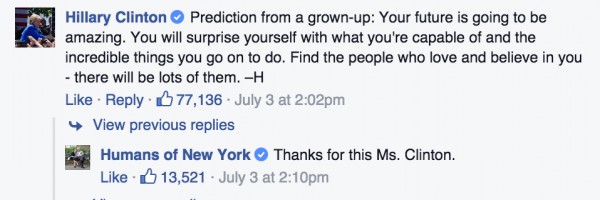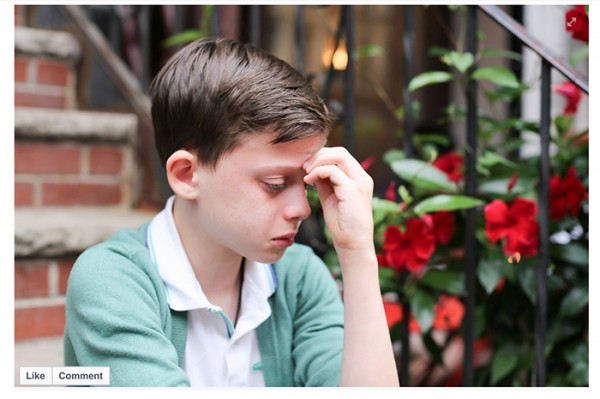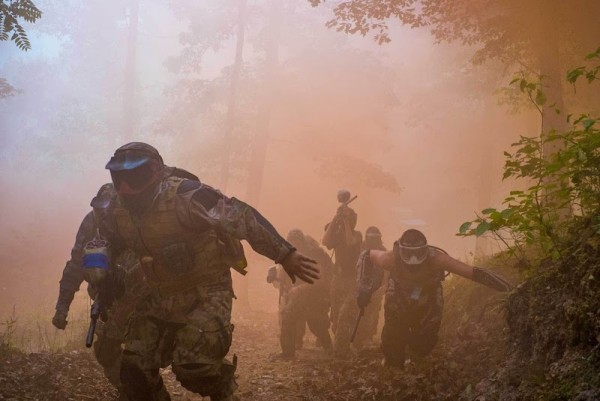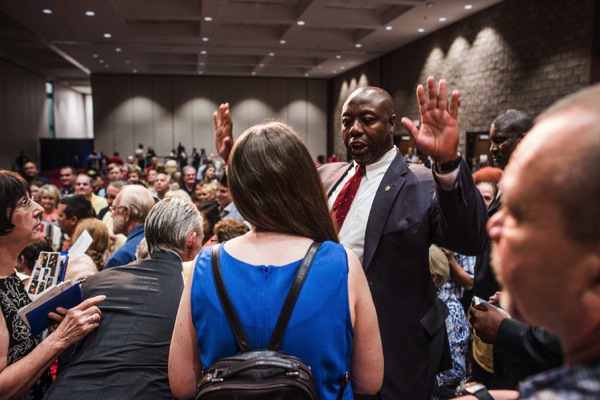Notes
Everything Wrong (Including Yes, Journalistically) With The HONY Gay Schoolboy Photo
I never thought I’d agree w Rush Limbaugh on, well, anything, but I also find this viral Humans of New York photo, and the accompanying caption, not only questionable, but unethical. With that, and on the heels of Hillary Clinton inserting herself in the comment thread of the HONY photograph, I want to address how the public engages with photographs. There is a code of ethics in Photojournalism. Rule #3 of the National Press Photographers Association (NPPA) Code of Ethics reads:
”Be complete and provide context when photographing or recording subjects. Avoid stereotyping individuals and groups. Recognize and work to avoid presenting one’s own biases in the work.”
Brandon Stanton, the photographer behind “Humans of New York,” does not consider himself a photojournalist, and therefore does not abide by the same rules a press photographer does. There’s a very important similarity, though, between Stanton and photojournalists. They are both communicating human experiences to the general public.
A viewer has certain expectations when looking at pictures. From the perspective of a photo editor, there are questions that immediately come to mind when looking at this photo. What is the context of this quote? What was the rest of the conversation? Was it responsible (and/or ethical) for Stanton to post a photo of a child this young saying he’s “a homosexual?” Where were this child’s parents? Who, what, where and when are the basic questions a photo, published in public, at least one with this type of import, must address in its content and in its caption. None of these questions can be answered hereby just looking at the photograph and the quote. Moreover, a quote is not a caption. This is a very important distinction for the audience to be able to make.
By not providing more context to the photograph, Stanton opens the door to pundits like Rush Limbaugh to further politicize the photograph. And the questions Limbaugh poses, before turning the photo into an ideological club, are valid. How is it that Stanton came upon this boy? Was he crying on the stoop when Stanton approached him? What precipitated the conversation with a boy this young about his sexuality? These are the types of questions asked of a photographer by an editor when submitting an image like this for publication.
There is also the issue of how overtly politicalized this HONY entry is when Mr. Stanton professes to be apolitical. “I purposely and pointedly try to avoid infusing any meaning in the work,” he has said.” Hardly devoid of meaning, this photo is highly political. Given Stanton infused this photo with so much charge this close to the landmark SCOTUS gay marriage decision, the timing also seems opportunistic. For a (self)-publisher who has disavowed any similarity to the media, the pairing of this photo with that quote at this point in time demonstrates, in no uncertain terms, an editorial decision to post material with no editorial context.
As for the photo itself, the sexualized quote is further amplified by a photo with sensual and suggestible qualities. The flowers are lusciously red. The parting of the curtains are suggestive of an “opening.” Either to a seclusion or a coming out. The boy is on a stoop in what looks like one of the more tony neighborhoods in New York City. His clothes suggest privilege. But how much do his clothes lend a sense of the effeminate, and if they do, and how much do they simply reflect family taste or, say, how the kids dress in private school? His head is down, his face red from crying. He’s vulnerable. Photographs are meant to tell stories, and to inform. This photograph tells us a lot and nothing at the same time. Which is why it’s questionable.
From the perspective of a viewer though, there is still not a solid story being told about this boy. In that the photo is heart-rending, it’s done it’s job. One can’t NOT feel something when looking at it. That said, there are too many assumptions: He’s crying because he’s gay. His being comfortable enough to have this conversation with a stranger. His maturity to agree to be photographed. That maturity allowing him to reveal himself honestly to the photographer and audience.
This is the first time in the history of visual communications photographers have had this kind of immediate and tangible reach. To have the audience HONY has (over 13 million on Facebook alone) when you’re dealing with people in public and to not have any accountability is problematic. (And, given the public’s low regard for the media, the fact Stanton is NOT the press, and operates outside its strictures, means his public not only affords him that leeway but actually respects and trust him more for it.) Here is some perspective on these numbers. The circulation of the top daily newspapers are considerably lower than HONY’s daily followers. The number one newspaper, The Wall Street Journal has a total circulation (print and web combined) of 2,378,827. Again, on Facebook alone, HONY has 13 million followers. To not have his material vetted, to not have an editor or photo editor asking these questions every time an image of a person appears in public, is a recipe for getting it wrong. Clearly, Brandon Stanton’s subjects and followers trust him implicitly, and we know his subjects willingly pose. But their trust is not built on the traditional relationship of journalist-to-public.
I appreciate these are old media standards being applied to new media. But they are still valid and need to be considered when looking at a photograph like this. The public support for the child is respectable and admirable, of course. But what of the consequences of Stanton’s editorial decision given the engagement of social media? What about the people that might see this child on the street (now that he’s famous) and mess with him? What kind of maturity, and social awareness was required to understand who he was talking to, and being photographed by? Did he realize this photograph would make him into an instant celebrity? One understands the consequences when talking to a reporter for The News or The Times. To what extent was that potential outcome represented here?
Then, there was this viral photo’s second ride. Further evidence of Stanton’s politicization of the picture was its irresistibility to the politicos and the pundits who found it impossible not too posterize for the presidential campaign andthe culture war.

On July 3rd, Hillary Clinton posted a comment on the HONY thread and the photo became an even bigger sensation. Her comment garnered over 77,000 likes. Clinton spoke directly to the boy as do most of the commenters, but it’s hard not to see her, and her team of social media commandos, as pandering. When political candidates are on the campaign trail, every single move they make has been plotted out for strategic gain. The obvious conclusion is that Mrs. Clinton commented, and also used this kid, to demonstrate her (ability to exercise) influence in social space.
Even with good intentions, there can be bad consequences. So while the candidate and the general public may feel that they are doing good for this boy by their comments of support, what they don’t appreciate is the opposite. Incapable of truly grasping what he was getting himself into when he agreed to have his photograph taken, the child has been turned overnight into a public personality, a photographic hero, framed by his fear of being gay. Going back to Rule #3, who in this scenario really had his back? If, by the way, his parents were standing right there with him as he was being photographed, as a viewer, I would like to know. Even more so, I’d like to know what they think of it now.
— Meg Handler
(Update/Correction: In the post, I misstate that the boy is “framed by his fear of being gay.” I should have said, he is fearful that people won’t like him because he is gay.)
(photo: Brandon Stanton/Humans of New York)




Reactions
Comments Powered by Disqus